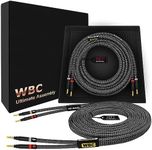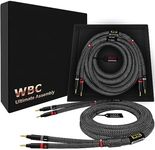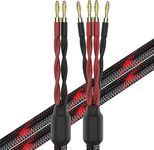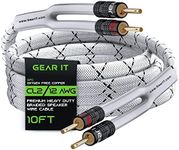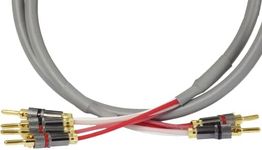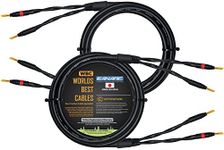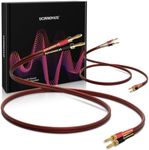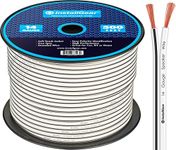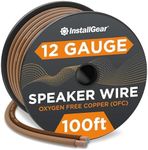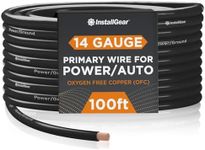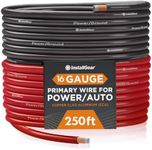Buying Guide for the Best Audiophile Speaker Cables
Choosing audiophile speaker cables can seem overwhelming, but the key is to focus on how the cables will fit your listening setup and needs. While some people believe cables make a huge difference in sound, others think the differences are subtle. The most important thing is to ensure your cables are well-made, the right length, and suitable for your speakers and amplifier. Understanding the main specifications will help you make a confident and informed choice.Cable Gauge (Thickness)Cable gauge refers to the thickness of the wire inside the speaker cable, usually measured in American Wire Gauge (AWG). Thicker cables (lower AWG numbers) can carry more current with less resistance, which is important for longer cable runs or for high-power systems. For short runs (under 25 feet), a thinner cable (like 16 AWG) is usually fine, but for longer distances or more powerful systems, a thicker cable (like 12 or 14 AWG) is better. To pick the right gauge, consider the distance between your amplifier and speakers and the power of your system—longer distances and higher power need thicker cables.
Cable MaterialMost speaker cables are made from copper, but you may also see cables made from oxygen-free copper (OFC) or even silver. Copper is a great conductor and works well for most people, while OFC is marketed as having fewer impurities, which some believe improves sound quality. Silver cables have slightly better conductivity but are much more expensive. For most users, standard copper or OFC cables are more than sufficient, unless you have a very high-end system and want to experiment.
Cable LengthThe length of your speaker cable should be just enough to reach from your amplifier to your speakers without being too tight or leaving a lot of slack. Longer cables can introduce more resistance, which can affect sound quality, especially with thin cables. Try to keep cable runs as short as possible, and if you need to go longer, consider using a thicker cable. Measure your space carefully before buying to avoid buying too much or too little.
Connector TypeSpeaker cables can come with different types of connectors, such as bare wire, banana plugs, spade connectors, or pin connectors. Bare wire is the most basic and works with most speaker terminals, but banana plugs and spades make connecting and disconnecting easier and can provide a more secure connection. Choose the connector type that matches your speakers and amplifier terminals, and consider how often you’ll need to connect or disconnect your cables.
Shielding and InsulationShielding and insulation protect the cable from interference and physical damage. Good insulation prevents short circuits and keeps the signal clean, while shielding can help reduce noise from nearby electrical devices. If your cables will run near power cords or other electronics, look for cables with good shielding. For most home setups, standard insulation is enough, but in environments with lots of electronic interference, extra shielding can be helpful.
Build QualityBuild quality refers to how well the cable is made, including the quality of the connectors, the strength of the insulation, and the overall durability. Well-made cables are less likely to break, corrode, or lose connection over time. If you plan to move your equipment often or want cables that will last for years, pay attention to build quality. Look for cables with sturdy connectors and thick, flexible insulation.

